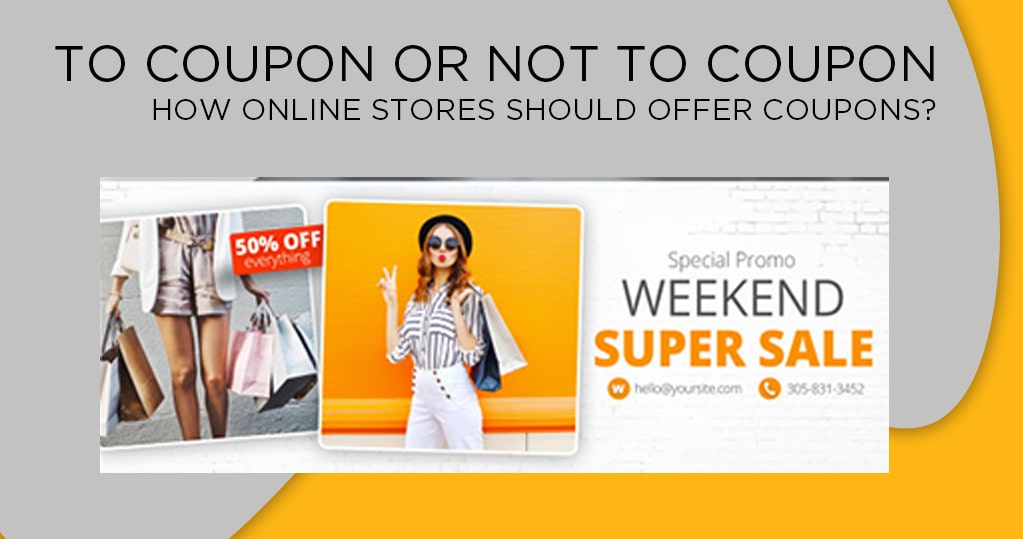There are many debates about whether and how online stores should offer coupons. They can help increase traffic, awareness, and sales, yet many merchants worry about them negatively impacting the bottom line.
While Builderfly doesn’t offer coupons on our service for so many reasons, we do build them into our platform and urge our clients to try utilizing them for their ecommerce businesses. Done properly, they can be a noteworthy driver of sales.
Types of coupons to try
Not all coupons will work for all kinds of online stores. We suggest trying out a couple of different kinds to see what moves the needle for you, then refine the offers as you go. Obviously, it’s essential to carefully look at your profit margins to come up with an offer that you can afford to make. After all, the point of a coupon is to finally increase your sales.
Minimum purchase

If you’re scared of discounting the way we’re scared of clowns, tying a base purchase amount to your offer is a decent method to ease into the amazing world of coupons. Something like “Get $10 off your next order of $50 or more” acts as a familiar blanket, promising you a specific profit level. If tested and tweaked a little, the minimum purchase amount can likewise entice customers to add more to their carts. However, it’s significant not to go overboard with that tactic. Try starting with your average order total as the minimum amount and consolidate it with a discount you can live with, then go from there.
Flat amount off
Another standard is a flat dollar amount off an order total, like “$20 off on your next order”. This will in general convert best if your store has an average order total of less than $200.
Percentage off

The “10% off on your next order” sort of coupon generally does better for stores with an average order aggregate above $100. Buyers don’t perceive as much of a value for a percentage off lower-order totals.
Pre-launch coupons
In case you’re launching a new online store, promote it to a specific people before you are officially open, and offer them a coupon to become one of your first customers. This can help build loyalty at an opportune time, in addition to acts as a good trial run for your store.
Loyalty coupons
Once you’ve been doing business a while, ideally you’ll have a list of people who know you, your products, and your service level: your previous customers. Since a lot of the hard work is already accomplished for you, sometimes all they need is a touch of coaxing to become repeat customers.
Try emailing anyone who has bought from you in the past with a special offer. Any coupon type above would work; only make sure you spell out that it’s because they bought from you previously, like “Exclusive offer: Returning customers get 10% off”. Regularly sending deals to those who have upheld you in the past is likewise a simple method to build loyalty.
Another way of doing this is the referral coupon: offer your customers 1 unique coupon code, and in the same email give them another code that they can pass on to a friend/family. If they like you and your products, ideally you’ll get two initial sales.
Buy X, Get Y

Also known as “The Old Tit for Tat”, this is another great method to dip a toe into couponing, because you’re guaranteeing yourself of a specific order total before the discount. Regardless of whether it’s “Buy 2, get 2 free” or “Buy 4, get 20% off”, the pricing of the items involved is critical. It’s a smart idea to test it on a specific item or category, except if you happen to sell a bunch of various styles of the same basic item.
Things to keep in mind
- Keep the offer simple: The more complex the offer, the harder it is to convey and understand. Adhere to the basics outlined above, particularly if you’re simply starting.
- Keep the coupon code simple: You need something easy to read, remember and type. Utilize actual words/phrases, hold it under 10 characters, and try to avoid utilizing lookalike characters if you blend in numbers. If at all possible, don’t put case sensitive codes.
- Use a landing page: If you do choose to limit to a category or set of items, it’s a vastly improved experience to land shoppers on a page that demonstrates all the eligible products. Not forcing individuals to chase around for them will improve your conversion.
- Add an expiry date: Expiring discounts and coupons within a reasonable amount of time not just makes it simpler to track the results, however, it creates a sense of urgency for shoppers. Ensure you communicate the expiration clearly.
We hope this post helped facilitate the minds of any couponphobics out there and gave you a couple of ideas on how to try them in your own business. The key is to build up your coupon strategy so you know how that discount marketing strategy will either expand your long-term repeat business or increase your deals per customer.
Happy discounting, everyone!








